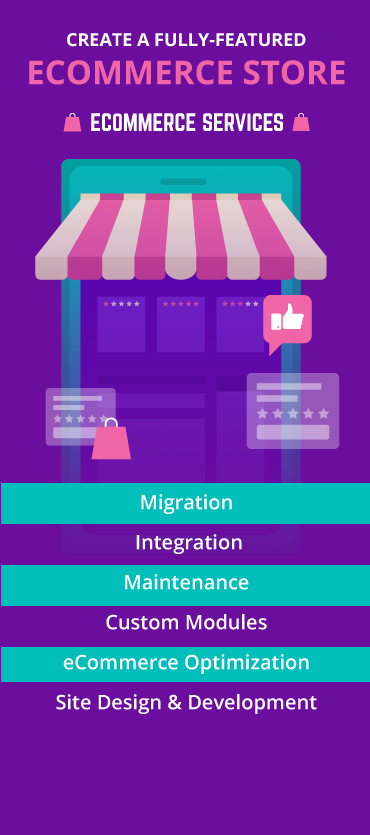eCommerce technology has grown at a skyrocketing rate, especially post-pandemic. The technological advancement in automation and data synchronization has facilitated the online shopping experience not only for customers but also for merchants.
With the cloud becoming a crucial aspect of every business, the importance of data accuracy, privacy, and consistency has grown as well.
Even a minor error or glitch in data can have an adverse impact on sales, decision-making, and customer retention.
However, maintaining and syncing data with an existing database seems easier than it actually is. This is the reason why data synchronization has become one of the paramount tools in running an online business smoothly.
Wondering how data synchronization can help your business grow? Read this blog post to find out!
Ready? Let’s go!
What is Data Synchronization?
Before we dive deeper, let’s first understand data synchronization.
Data synchronization is the process of consolidating data across different sources and software applications, ensuring that data within all your systems are consistent.
It ensures your data is accurate, secure, and in compliance with your business norms to improve team collaboration and customer experience. As data comes in, it is cleaned and checked for errors, duplication, and consistency before putting it to use.
Why Do We Need Data Synchronization?
Now that we know what data synchronization is, let’s understand why we need it.

Better Collaboration Between Sales and Marketing
Usually, marketing and sales share the common goal of acquiring new business. And any misalignment between sales and marketing results in poor strategy and implementation, and uninformed business decisions.
In a data-dominant business world, where customer retention is essential and conversational customer relationships are cherished, alignment of sales and marketing is the key to success.
And data synchronization is a powerful tool that ensures your sales and marketing teams are under one umbrella. It brings together all data into a single database and ensures that every team member has access to the same information.
Real-Time Data Sync Between Systems
Data synchronization is about keeping the data consistent over time too, therefore, if the data is modified in any way or new data is added, changes must reflect in every system in real-time.
Syncing data in real-time avoids mistakes, prevents privacy breaches, and ensures only the most up-to-date data is available across different systems.
Data Security and Accessibility
The increasing cyber threats have forced businesses to think about data security more seriously. In order to keep security threats and data breaches at bay, organizations need to adopt a more data-centric approach. This means setting up security parameters around the database, limiting data access, and knowing who should have access to it and how it should be accessed.
Simply put, businesses need to differentiate the data that’s accessed by different departments due to security issues.
Enable Team Collaboration
Data silos are one of the biggest culprits of reduced productivity and business efficiency. It makes it difficult for different departments to collaborate and share the data to meet common business goals.
As a result, it becomes difficult to work together effectively.
Data Synchronization solves this problem by ensuring that data is synced in real-time and is visible to all the team members. Hence, enabling effective collaboration among teams.
Streamline and Automate Cross-Functional Workflows
Scattered data across different platforms makes it difficult to build actionable, accurate, and comprehensible reports based on data-driven insights.
However, data synchronization helps streamline and automate cross-functional workflows. It also helps create better and more accurate reports, reduces overhead costs, and provides greater control over finances.
Top Data Synchronization Challenges
Some of the challenges you may encounter while synchronizing your data are:
Security
Security and confidentiality are the two most important governance issues that businesses must carefully manage. Data that moves through your systems must be compliant with certain regulatory standards and meet specific industries and privacy laws.
A data synchronization tool ensures that any changes made to your data are updated in a manner that remains compliant with the security needs and standards.
Data Quality
Multiple systems used by multiple business users imply that data is structured differently throughout its lifecycle.
Therefore, it is important that data quality is maintained when it’s synchronized between different systems, platforms, and/or tools.
Without a seamless synchronization system in place, data transactions and authorization can be delayed, and management controls might be affected by inaccurate data.
Data Complexity
As your business grows and scales, your data tends to increase as well.
And excessive data makes things more complex.
Thus, it often becomes difficult to sync your data across different systems while maintaining its integrity and accuracy.
A robust data synchronization tool helps in stabilizing incoming and outgoing data and ensures that it is compliant and updated across the organization.
How Grazitti Can Help?
Grazitti’s suite of products includes Maginate– a Marketo Magento Connector that syncs Magento store’s customer data seamlessly in Marketo by creating a new lead or associating it with an existing lead in real time.
Grazitti provides services for every aspect of your data synchronization journey — collect, transform, govern, and share — we ensure data quality and accuracy while delivering measurable results.
Want to Sync Data Between Your eCommerce Store and Marketo? Contact Us!
If you have any questions, drop us an email at [email protected] and we will take it from there.











